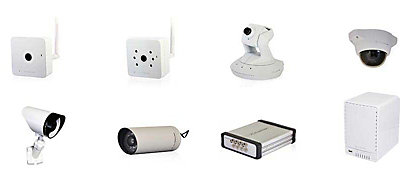The Beginner’s Guide to Smart Security Cameras for Your Home

Smart video cameras are one of the most requested products for security and home automation systems.
But there are a lot of choices out there.
How do you pick the smart video camera that’s right for you? Simple.
Follow this 3-step process:
- Determine the goal of the camera
- Figure out the camera’s placement
- Choose your must-have features
We’ll show you what we mean in more detail.
Step 1: Determine the goal of the camera
There are 2 main reasons people get smart home security cameras. Decide which one (or both) you want.
Keeping an eye on things
Want to keep tabs on your babysitter or check in on your home while you’re away?
All you need is a smart video camera that’s paired with an app so you can view video on your phone.
Getting video alerts of activity in your home
Another great use of smart video cameras is getting alerts sent to you when something happens in your home. That way you can see:
- When your kids get home from school
- Who armed or disarmed your security system
- What caused your alarm to sound
- And much more
However, video alerts require a more complex security system that detects motion, triggers your camera to record and sends a video alert to you.
Step 2: Figure out the camera’s placement
Now that you know what your goal is, you can start thinking about where you’ll place the camera for the best view.
Will it be on a bookshelf? Then you want a camera with a stand.
Is it high on a wall or the ceiling? Then you want a camera with a wall mount (and you might also want to consider a professional installation).
Do you want to mount one outside? Then you want a special camera that can withstand the weather.
Step 3: Choose your must-have features
Smart video cameras come with many different features. You must decide which are the most important for your goal.
For example, if your goal is to be able to easily check in on your home and you want to minimize the number of cameras you have to install, you might want to consider a camera you can pan and tilt.
Some other features and their uses:
- Infrared vision (or night vision) — Allows you to see video in the dark. Especially useful if your camera is for security and will be placed outside.
- Wireless — Most smart video cameras connect over Wi-Fi. But even wireless cameras will need a power source, so they won’t be completely wireless.
- HD recording — Captures video in high-definition for better clarity of what’s going on in your home.
- Local vs. cloud recording — Do you want your videos stored in the cloud where you can access them wherever you want? Or do you want them stored on your computer at home?
- Angle of view — This is measured in degrees. The bigger the angle, the wider area your camera will capture.
- Motion capture — Have your camera record whenever it detects motion.
- Compatibility with existing systems — If you want to tie in the camera to your security system, make sure it’s compatible with the equipment you already have.
Need help in Metro Atlanta? Contact us
We’ll help you find the perfect smart security camera for you. BriteBox serves homeowners in the metro Atlanta area. Contact us for more information.
Related Reading
Subscribe To Our Newsletter
Get up-to-date current news, promotions, and industry tips.
